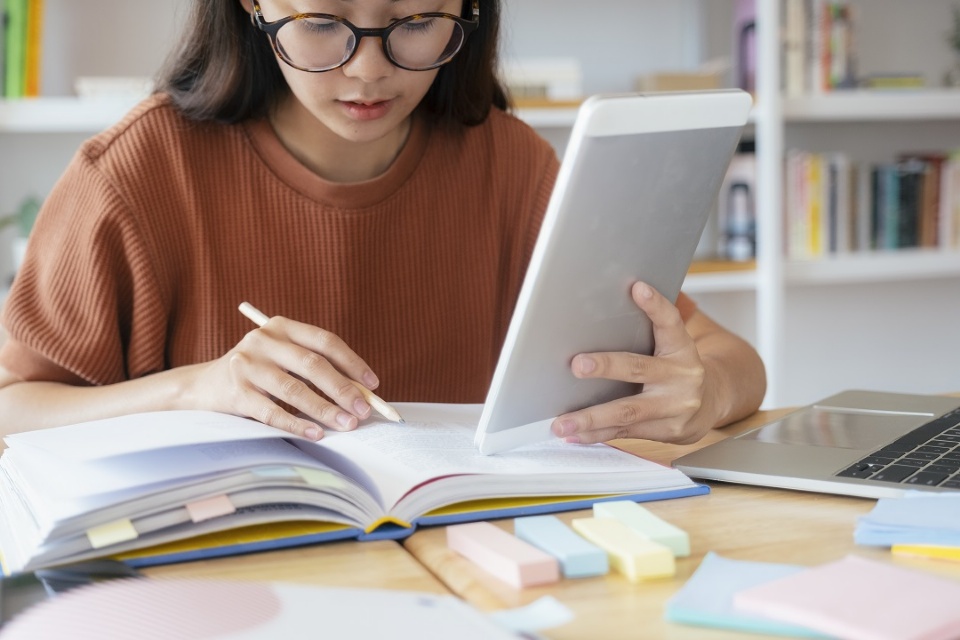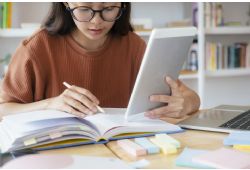The
past few months have changed the face of traditional education on a global
scale. As every corner of our province battled an ‘invisible enemy’ in the
context of COVID-19, education professionals grappled with the task of
supporting their students at breakneck speed. Some education sectors were more
equipped than others to flip the switch to online learning platforms—such as post-secondary
learning environments—as several institutions were already offering online learning
options.
In
a province where both public and private schools strive to offer innovative
learning experiences, the challenges of the 2019-2020 school year brought on by
the pandemic were unprecedented. At the time of publishing these words, many
questions are still unanswered about what education will look like at the start
of the 2020-2021 school year, but one thing is for certain; every education
professional has had to adapt to their new working reality, and many of those
changes will likely be part of the ‘new normal’ for a long time to come.
Mary
Micocci, an attendant for special needs students at a Rosemère elementary
school, says the pandemic has changed just about every aspect of the way she
will interact with her students once schools in that region reopen in the Fall.
“Our whole approach on how we communicate with our students and reassure them
will be different. We still want them to feel comfortable and communicate with
us, but it will all be done at a [physical] distance,” she says.
Due
to physical proximity restrictions in the school setting, Micocci will no
longer be able to sit beside her students when they need assistance with their
school work, and taking students out of the classroom to work one-on-one in a
more focused environment will no longer be an option. “We may have to use more
virtual tools than ever before, even in the physical classroom, because we can
no longer distribute books and supplies like we used to.”
Though
many high school students have attended virtual classes held by their teachers
during the school closures, this type of learning scenario presents its own set
of challenges. “When you’re teaching in a classroom and can physically see your
students, you can often spot-check students’ understanding based on body
language, but when you’re teaching to a screen with dozens of black boxes in
front of you, that social aspect of teaching is missing, and it’s been a real
eye-opener,” says Andrea Venditti, a high school teacher for the Sir Wilfrid
Laurier School Board, who teaches Science to secondary IV and V students. “A
lot of the teaching I do is inquiry-based learning, which requires
collaboration between teachers and students, movement around the classroom…it’s
just not conducive to distance learning.”
Despite
these challenges, Venditti says her students have been attending her virtual
classes and participating in curriculum-based discussions, even if they can’t
practice in a lab. “I was lucky to have established a really good relationship
with my students even before this [pandemic] happened, so I think that has
helped a lot in terms of my students actually wanting to show up to [virtual]
class,” she says. “I brought it to a human level. We don’t like not being able
to see each other at school, but we have to deal with it, so we might as well
make the best of it. That attitude has really helped me to get back to feeling
positive and energetic again.”
With ever-changing
scenarios and guidelines, education professionals will undoubtedly have to
continue to adapt their environments and procedures in order to adhere to
health and safety measures that have now taken on a whole new paradigm. “My
hope is that students who are returning to school in the Fall will have had
time to adapt to the new way of doing things, that their parents will have
helped them prepare over the summer, and that we will have the time we need to
prepare the school and ourselves for all of the new safety measures,” says
Micocci.

 In The Latest Issue:Latest Issue:
In The Latest Issue:Latest Issue:
- A Bittersweet Farewell
- The new Laval Aquatic Co...
- The End of an Era:
Articles
Calendar
Virtual- ANNUAL TEACHER APPRECIATION CONTEST
- APPUI LAVAL
- ARTS & CULTURE
- CAMPS
- CAR GUIDE
- CCIL
- CENTENNIAL ACADEMY
- CHARITY FUNDRAISING
- CITYTV
- COSMODÔME
- COMMUNITY CONNECTIONS
- COVER STORY
- DINA DIMITRATOS
- ÉCOLE SUPÉRIEURE DE BALLET DU QUÉBEC
- EDITORIALS
- ÉDUCALOI
- EDUCATION
- EMPLOYMENT & ENTREPRENEURSHIP
- FÊTE DE LA FAMILLE
- FÊTE DU QUARTIER SAINT-BRUNO
- FAMILIES
- FESTIVAL LAVAL LAUGHS
- FÊTE DE QUARTIER VAL-DES-BRISES
- FINANCES
- GLI CUMBARE
- GROUPE RENO-EXPERT
- HEALTH & WELL-BEING
- 30 MINUTE HIT
- ANXIETY
- CHILDREN`S HEALTH & WELLNESS
- CLOSE AID
- DENTAL WELLNESS
- EXTREME EVOLUTION SPORTS CENTRE
- FONDATION CITÉ DE LA SANTÉ
- GENERAL
- HEARING HEALTH
- MESSAGES FROM THE HEALTH AGENCY OF CANADA
- MENTAL HEALTH
- SEXUALITY
- SOCIAL INTEGRATION
- SPECIAL NEEDS
- TEENS
- THE NUTRITION CORNER
- THE NUTRITION CORNER - RECIPES
- VACATION DESTINATION
- WOMEN'S FITNESS
- WOMEN'S HEALTH
- HILTON MONTREAL/LAVAL
- HOME & GARDEN
- INTERNATIONAL WOMEN'S DAY
- JAGUAR LAVAL
- LAVAL À VÉLO
- LAVAL FAMILIES TV SHOW
- LAVAL FAMILIES MAGAZINE CARES
- LAVAL URBAN IN NATURE
- LE PARCOURS DES HÉROS
- LES PETITS GOURMETS DANS MA COUR
- LEON'S FURNITURE
- LEONARDO DA VINCI CENTRE
- LFM PREMIERES
- LIFE BALANCE
- M.P. PROFILE
- MISS EDGAR'S AND MISS CRAMP'S SCHOOL
- MISSING CHILDREN'S NETWORK
- NETFOLIE
- NORTH STAR ACADEMY LAVAL
- OUTFRONT MEDIA
- PASSION SOCCER
- PARC DE LA RIVIÈRE-DES-MILLE-ÎLES
- PÂTISSERIE ST-MARTIN
- PIZZERIA LÌOLÀ
- PLACE BELL
- PORTRAITS OF YOUR MNA'S
- ROCKET DE LAVAL
- SACRED HEART SCHOOL
- SCOTIA BANK
- SHERATON LAVAL HOTEL
- SOCIÉTÉ ALZHEIMER LAVAL
- STATION 55
- STL
- SUBARU DE LAVAL
- TECHNOLOGY
- TEDXLAVAL
- TODAY`S LAURENTIANS AND LANAUDIÈRE
- TODAY`S LAVAL
- WARNER MUSIC
- THIS ISSUE
- MOST RECENT
Magazine
Education 2.0
Articles ~e 105,7 Rythme FM 4 chemins Annual Teacher Appreciation Contest Appui Laval Arts & Culture Ballet Eddy Toussaint Camps THIS ISSUE MORE...
CONTESTS Enter our contests
CONTESTS Enter our contests
CALENDAR
Events & Activities
COMMUNITY Posts Events
PUBLICATIONS Our Magazine Family Resource Directory
LFM BUSINESS NETWORK Learn more
COUPONS Click to save!
COMMUNITY Posts Events
PUBLICATIONS Our Magazine Family Resource Directory
LFM BUSINESS NETWORK Learn more
COUPONS Click to save!
SUBSCRIPTIONS
Subscribe to the magazine
Un-Subscribe
E-NEWSLETTER Subscribe to our E-newsletter Un-Subscribe
WRITE FOR US Guidelines & Submissions
POLLS Vote today!
E-NEWSLETTER Subscribe to our E-newsletter Un-Subscribe
WRITE FOR US Guidelines & Submissions
POLLS Vote today!
ADVERTISERS
How to & Media guide
Pay your LFM invoice
SUGGESTIONS Reader's Survey Suggest a Listing
LFM About Us Our Mission Giving Back Contact Us
SUGGESTIONS Reader's Survey Suggest a Listing
LFM About Us Our Mission Giving Back Contact Us
 PICK-UP LOCATIONS
Get a copy of LFM!
PICK-UP LOCATIONS
Get a copy of LFM!
TERMS & CONDITIONS Privacy | Terms
ISSN (ONLINE) 2291-1677
ISSN (PRINT) 2291-1677
Website by ZENxDESIGN




Tweet
Share